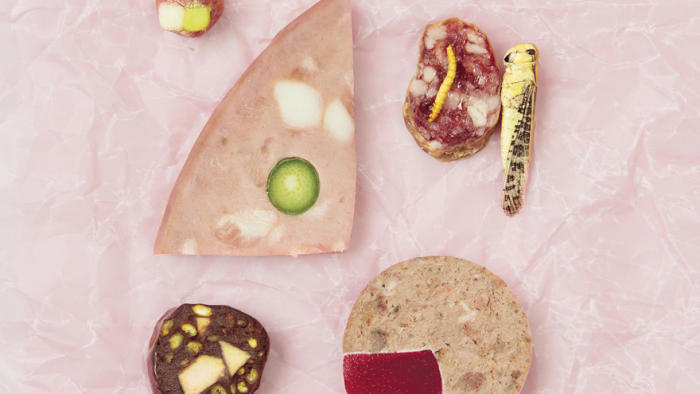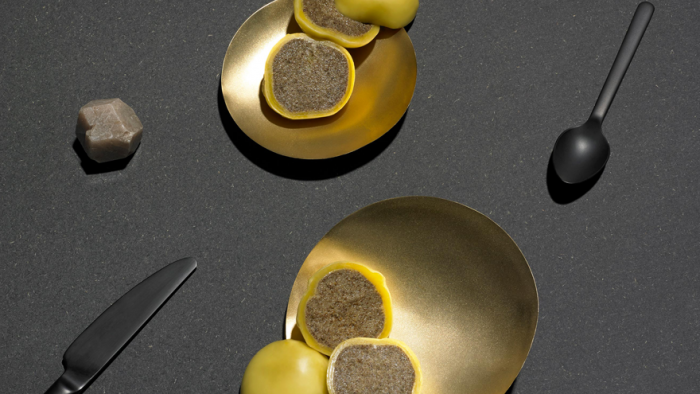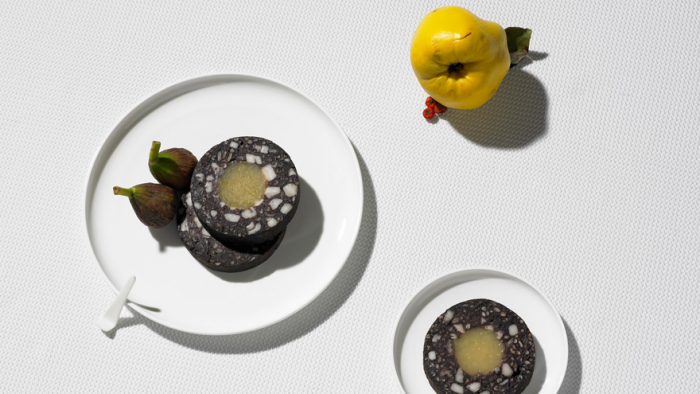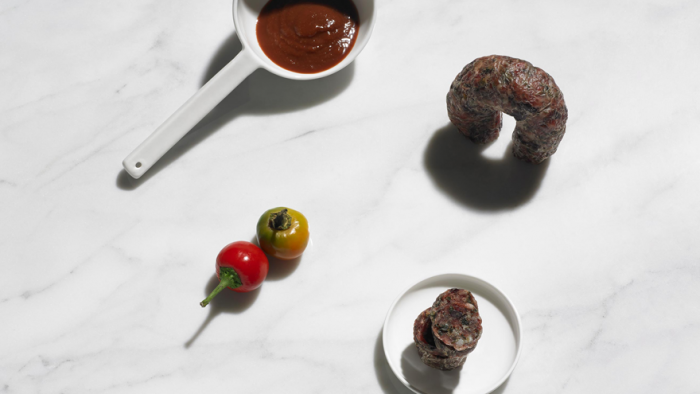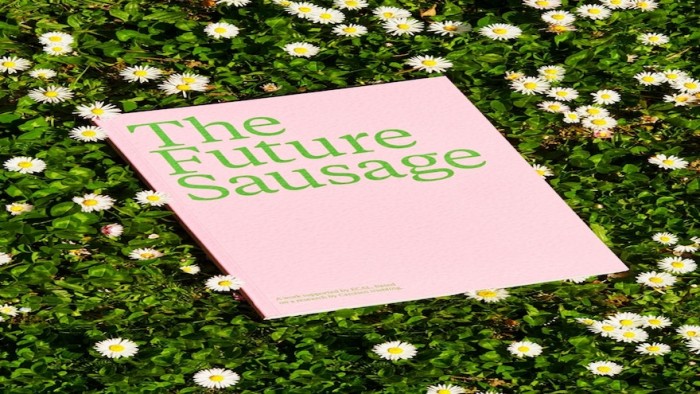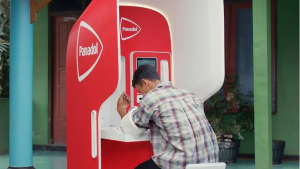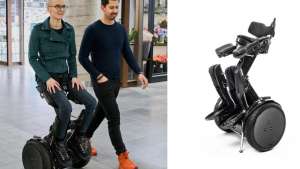The Future Sausage is a research project turned book by product designer Carolien Niebling. To speculate on solutions for the global problem of meat over-consumption, Niebling started to explore the viability of one of humanity’s most successful foodstuffs – the sausage. Perhaps the economical, age-old design of the meat tube will be able to carry us into an entirely different, meat-free diet in the near future.
According to Niebling, “The sausage remains a cornerstone of our food culture. England alone has over 470 different types of breakfast sausages. Now, according to the Food and Agriculture Organization (FAO), we are facing a serious shortage of protein-rich-food. Meat, in particular, will be scarce. One reason for this is over-consumption: in today’s world, we simply consume too many animal products. So, I wondered, can we look to the sausage to provide a solution once again?”
It is no secret that humanity’s over-reliance on animal products (especially for food production) has some dire ramifications for the environment and the quality of life for the animal. As prairies and battery chicken farms continue to grow, real estate and transport prices drive up the cost of meat products for the consumer. Recognising that this is an ultimately unsustainable direction for the world to continue moving in, researchers (such as Niebling and her food-designer-colleagues) work towards discovering more diverse, tasty and tenable dishes for future generations.
The Future Sausage book offers a comprehensive breakdown of what a sausage is, treating it as any other design subject. As an example of highly efficient butchery, the sausage quickly became popular some 5000 years ago as a way to make the most of animal proteins during harsh times. The trick, if there is one, lies in the emulsification of the meat – protein is ground into a kind of pureé, giving it a unnaturally smooth texture, before being stuffed into a thin membrane which is made of animal intestines.
The emulsification process effectively disguises the ingredients that go into sausage-making (allowing for offal or other parts of the animal to be included for cost-effectiveness). It is this process that Niebling harnesses for more healthy alternatives. Teaming up with a molecular chef and a master butcher, she has devised a number of sausage recipes that comprise fruits, nuts, spices and sometimes insect-matter.
Niebling believes that these meat-free sausage compositions could save us from our obsession with meat products, offering a more gastronomically diverse and ethical version of the food item that we are already used to.
“The first and second part of the book looks at the design of the sausage. It catalogues different types of sausages, their various means of construction. The third part contains a descriptive list of lesser-known ingredients, carefully selected for their ‘future potential’. There are two important series of photographs: The ingredient collages by Emile Barret are explorations of the ingredients used in the sausages. The other series by Jonas Marguet, represent the character of the sausage, whether it is humble and sweet or robust and manly or even confident and classic.”
The book contains a matrix of icons, textures and detailed photographs of the new sausages that may be suitable for future mass production – all of which are sans meat. The Future Sausage project was successfully funded on Kickstarter.

